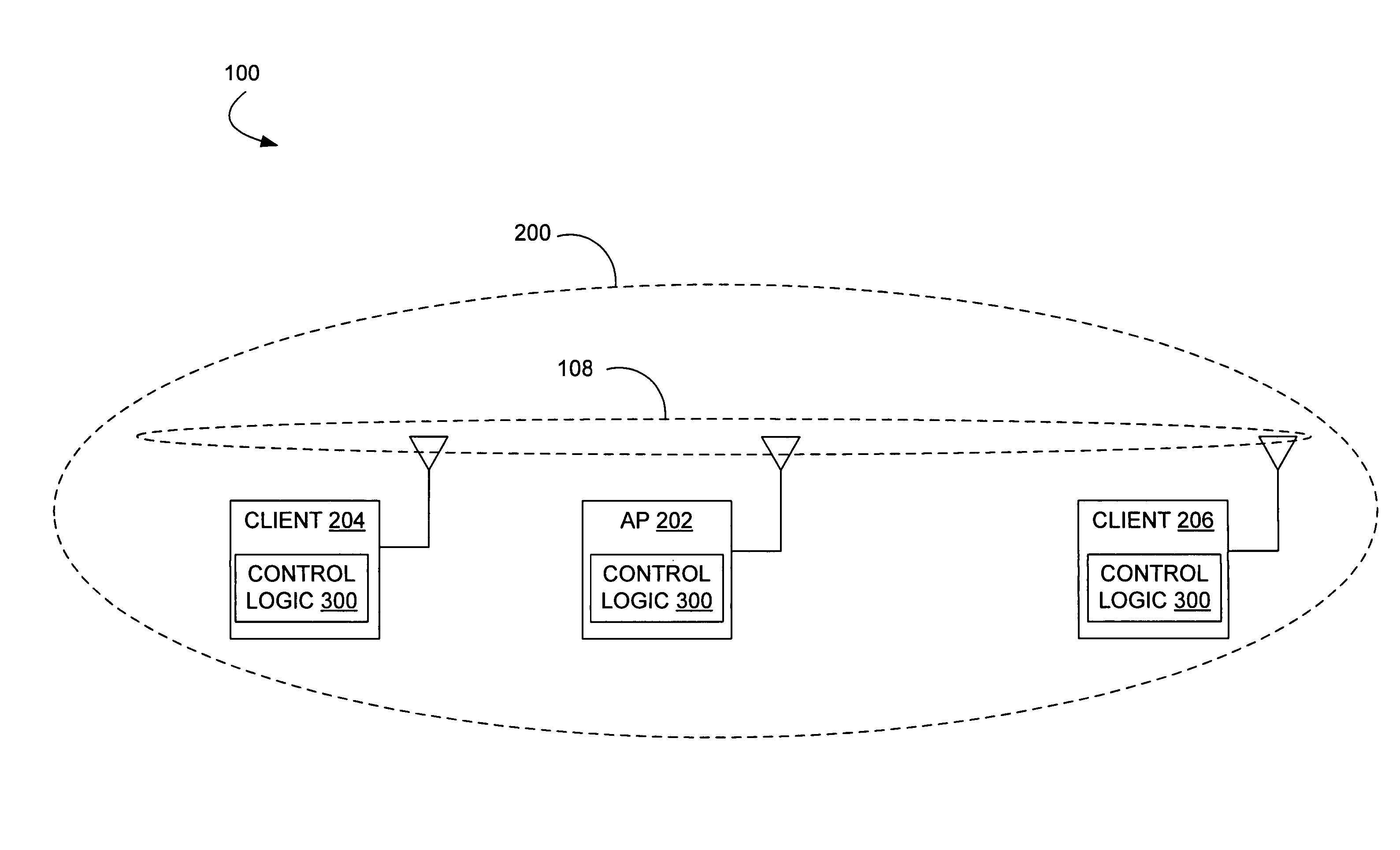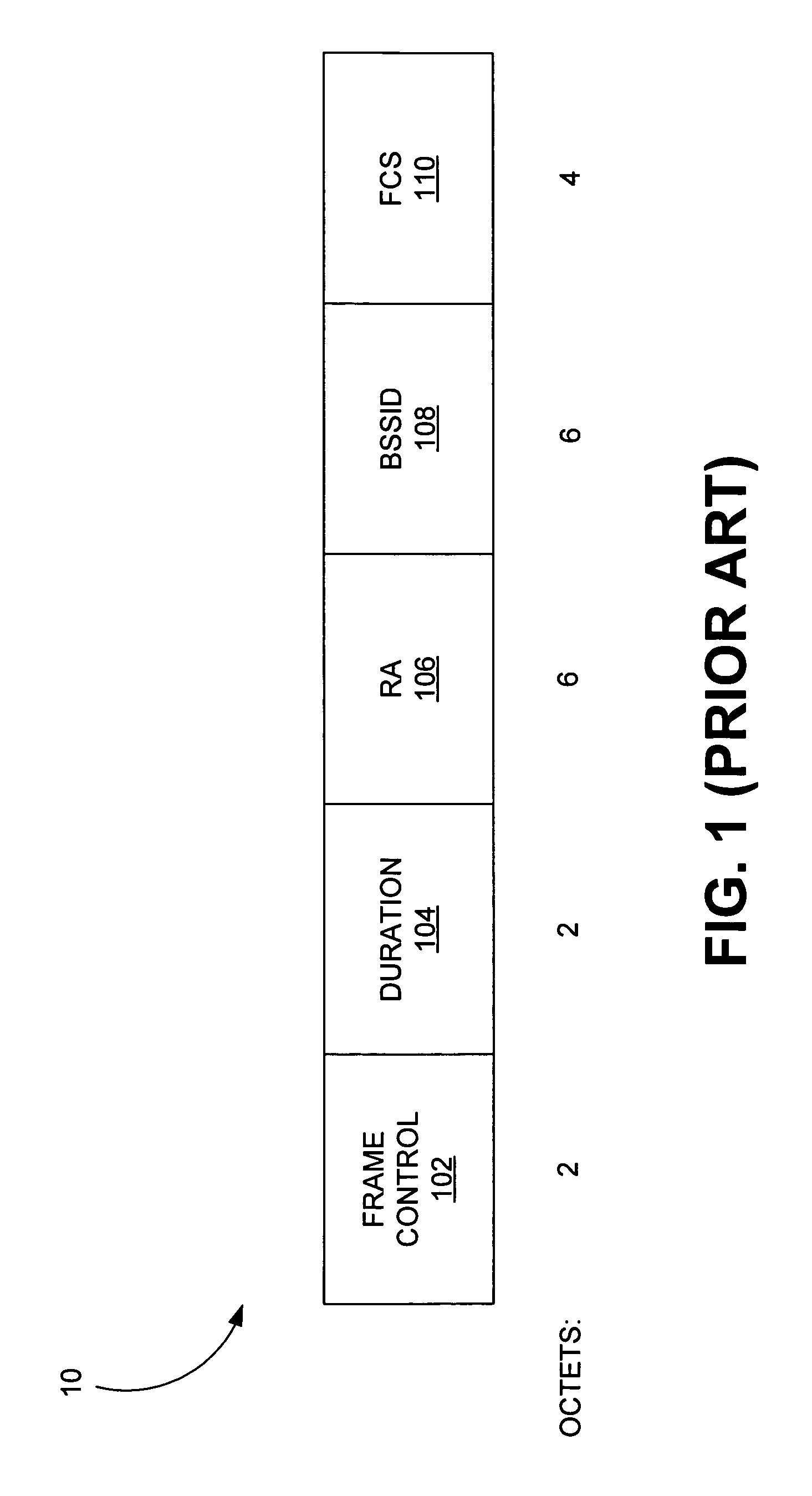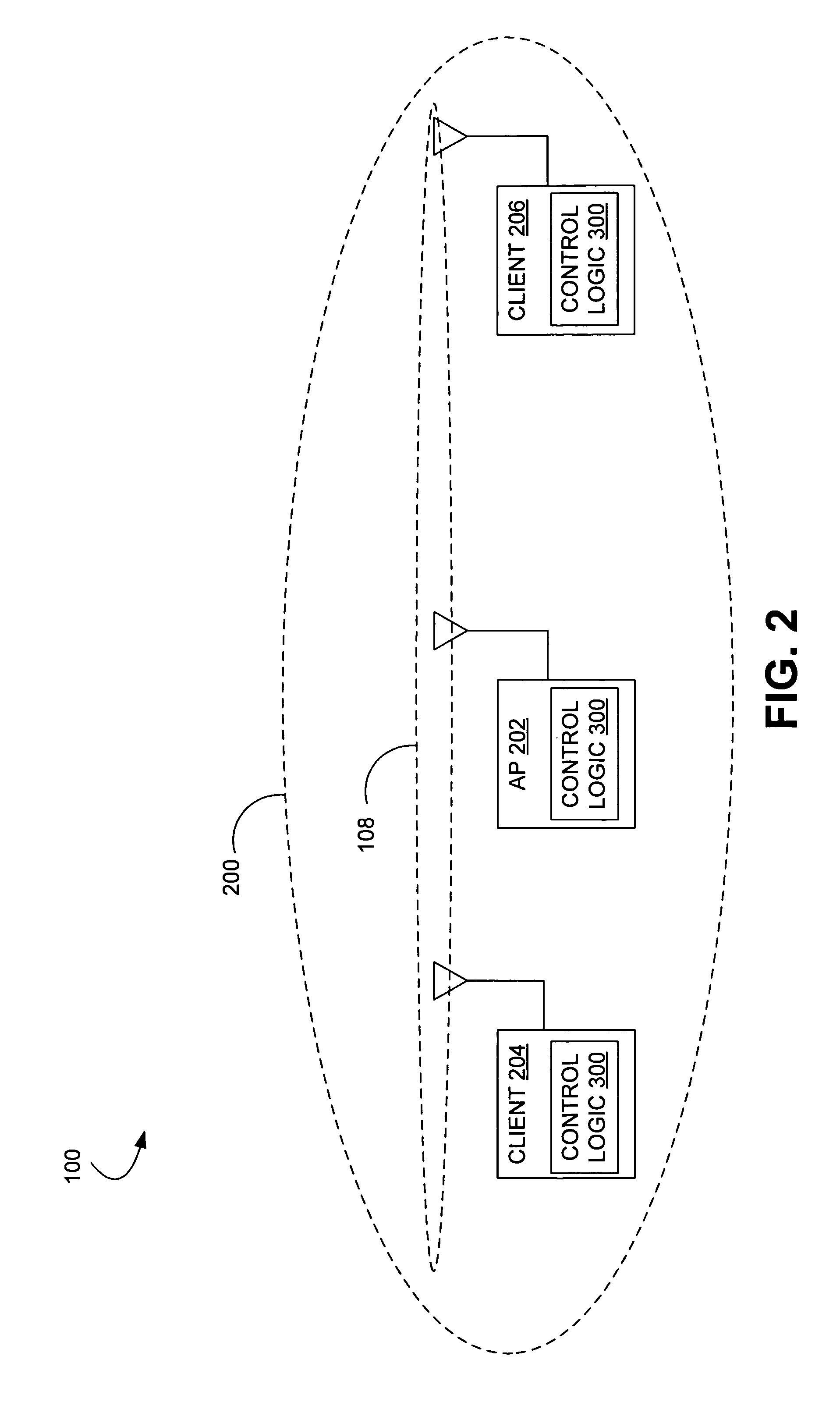Symmetric transmit opportunity (TXOP) truncation
a transmission opportunity and symmetric technology, applied in the field of communication systems and methods, can solve problems such as inequity in opportunities, hidden nodes, and devices that cannot detect transmissions from the first devi
- Summary
- Abstract
- Description
- Claims
- Application Information
AI Technical Summary
Benefits of technology
Problems solved by technology
Method used
Image
Examples
Embodiment Construction
[0035]Disclosed herein are various embodiments of symmetric transmit opportunity (TXOP) truncation (STT) systems and corresponding mechanisms or methods in a wireless network (herein, individually or collectively referred to also as an STT system or STT systems). The STT systems described herein comprise functionality to truncate a TXOP in a symmetric manner in a plurality of devices. That is, in various STT systems and methods described herein, both access points (APs) and client stations (herein, clients) are also allowed to truncate their TXOPs by transmitting a CF-end frame. This truncation is referred to as a TXOP truncation, where a NAV is first set for some maximum duration of time (e.g., the TXOP limit) and then reset when no more traffic (e.g., of frames) is left and there is some NAV time that still remains. In general, a TXOP comprises a signal exchange which may begin with the transmission of a short frame such as an RTS or CTS and ends with the last frame sent or receiv...
PUM
 Login to View More
Login to View More Abstract
Description
Claims
Application Information
 Login to View More
Login to View More - R&D
- Intellectual Property
- Life Sciences
- Materials
- Tech Scout
- Unparalleled Data Quality
- Higher Quality Content
- 60% Fewer Hallucinations
Browse by: Latest US Patents, China's latest patents, Technical Efficacy Thesaurus, Application Domain, Technology Topic, Popular Technical Reports.
© 2025 PatSnap. All rights reserved.Legal|Privacy policy|Modern Slavery Act Transparency Statement|Sitemap|About US| Contact US: help@patsnap.com



